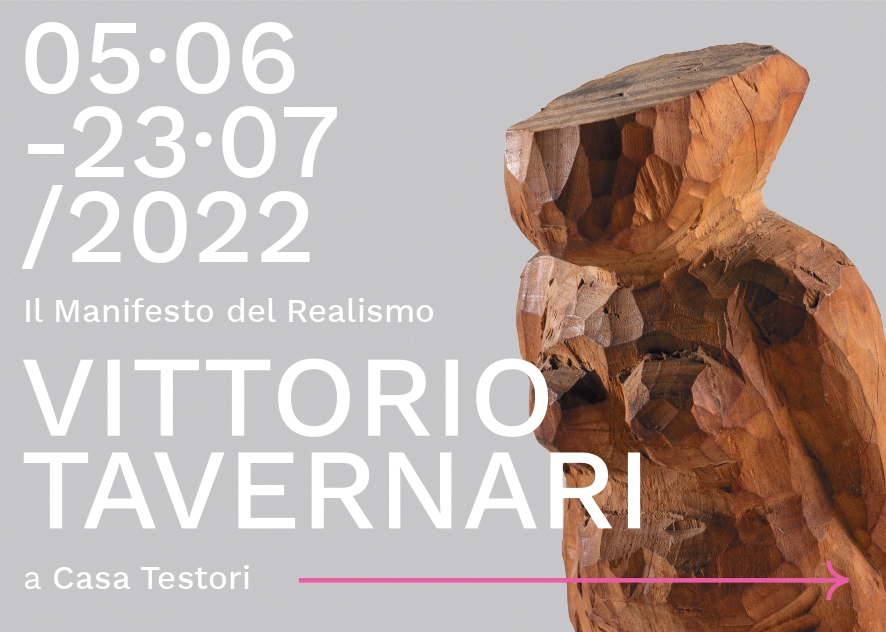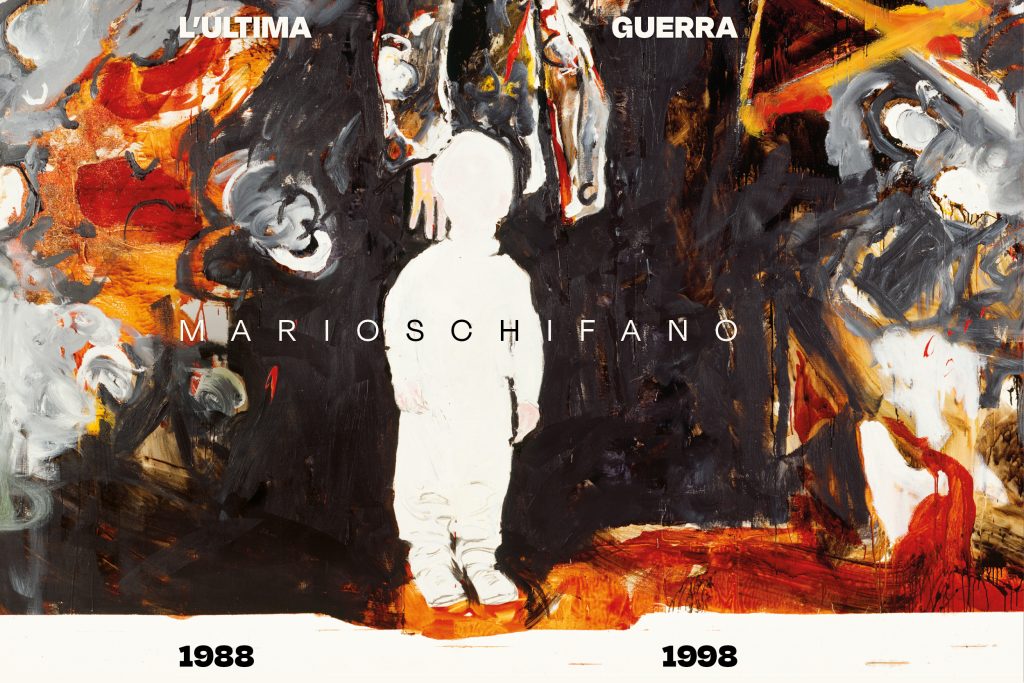Curated by Alice Boltri and Davide Dall’Ombra
Casa Testori
5 June – 23 July 2022
“For us, painting and sculpting is an act of participation in the total reality of mankind, in a given place and time, a reality that is contemporary and in its succession is history”.
March 1946: the magazine Argine Numero published Oltre Guernica. Il Manifesto del Realismo di pittori e scultori. Among the ten signatories also appear the names of Vittorio Tavernari and Giovanni Testori, the probable draftsman of the Manifesto.
It is from this episode that the exhibition Il Manifesto del Realismo. Vittorio Tavernari a Casa Testori began. The exhibition, which opened on Sunday 5 June and will remain open until 23 July 2022, hosts on the first floor an important nucleus of sculptures by Vittorio Tavernari (1919-1987), created in the years around the Manifesto, preserved in the Associazione Giovanni Testori Archive.
The exhibition inaugurated the ARCHIVIFUTURI project, the first edition of the Festival degli Archivi del Contemporaneo, organised by the network of the same name set up thanks to the winning project of the PIC 2020/2022, supported by the Lombardy Region.
The works on display, which are accompanied by important coeval drawings, lead the visitor to the discovery of those crucial years for the activity of Milanese artists and for the stylistic evolution of the sculptor, who was committed to unhinging the figurative. During the exhibition period, Casa Testori also organises curator-guided tours and educational workshops for families to provide a deeper insight into the artist, his works and his technique.
Opening the exhibition is a plaster sculpture from 1943: made for the following year’s casting, it gives body to a female figure in torsion that well represents Tavernari’s modelling before the war, prior to the sculptural production linked to the Manifesto years. We can see a process on the body in the making, witnessed by a bronze version with arms, now lost but published in Argine Numero in 1946.
The core of the seven wood sculptures presented in the exhibition belongs to the period linked to the Manifesto, between 1944 and 1947. In them, one can see the evolution from a strongly figurative depiction to a simplification of forms that gives them a primitive and archaic connotation, tending towards that abstractionism that would in fact characterise the artist’s later period, from 1948 onwards. Maternità (Maternity, 1944) opens the series with simple, essential strokes that sharply delineate volumes. The figures are presented in static poses but characterised by ancestral and imperceptible movements, as in Donna che si sveste (1945). It is a pair of sculptures that constitutes an almost obligatory start to represent the full range of Tavernari’s mobile production during the war, as already highlighted in the exhibitions in which they were both exhibited, at the Pavilion of Contemporary Art in Milan (1969) or at the Rodin Museum in Paris (1973).
A nucleus of three small-format sculptures with great plastic tension dates back to 1945 and clearly presents the slightly later phase of Tavernari’s production. The somatic features and details of the clothing disappear to make way for more compact and faceted forms that evoke the sketch, chosen to embellish the expressive force inherent in the material. This treatment is less pronounced in Cariatide and finds its full expression in Figuretta femminile con braccio levato dietro la testa and Figuretta femminile con braccia distese, two sculptures that show a changed search for the impression of movement, on the edge of the imperceptible.
Concluding the tour is a pair of sculptures of different proportions placed in dialogue with each other. Realised after the publication of the Manifesto, Piccolo nudo (1946) and Torso femminile (1947) set out on the path that would lead to abstractionism and Tavernari’s famous “Torsos”. The artist transforms wood by finely carving it into sinuous forms in which only the distinctive anatomical elements remain recognisable.
In a close dialogue with the sculptures, one wall is dedicated to Tavernari’s contemporary graphic activity, displaying, on the one hand, a series of nudes strongly linked to the pre-Manifesto period of plaster sculpture and, on the other, a trio in which the same material plane work of the wooden sculptures on display can be traced, expressed here in pen and ink drawings on wet paper. These are often two-sided drawings, in which Tavernari reuses papers belonging to the first period, resulting in documents that condense the formal characteristics of this crucial passage for the artist, from 1943 to 1948.
Moreover, as early as 1966, Carlo Ludovico Ragghianti, when writing a catalogue of Tavernari’s drawings, explained the decisiveness of the artist’s progress in drawing, where “the pen of varying thickness is used with aggressive marking and tracing speed, on a paper medium that is wet or soaked so that the figure can “settle” immediately, appear immersed in an atmosphere that is not uniform or fluid, but of varying and contrasting intensity.”
Finally, in the exhibition, the centrality of the Manifesto for Tavernari and the Varese cultural environment is confirmed by the evocation of the Mostra del “Numero”, set up in Bruno Grossetti’s Galleria Varese in the summer of 1946, probably at the behest of the sculptor, who wanted to bring the artists who, to varying degrees of involvement, were part of the magazine to his area. An important exhibition that had been lost track of, where works by Tavernari himself and Ciri Agostoni, Giuseppe Ajmone, Aldo Bergolli, Bruno Cassinari, Renato Guttuso, Ibrahim Kodra, Ennio Morlotti, Giovanni Paganin, Armando Pizzinato, Ernesto Treccani, and Emilio Vedova were presented. A team that had already changed with respect to the signatories of the Manifesto, in which Testori’s absence stands out, in years of upheavals, continuous rethinking and cultural or programmatic reorganisation for artists always divided between the need to share and the need for independence.
The exhibition at Casa Testori inaugurated the project ARCHIVIFUTURI. First Edition of the Festival degli Archivi del Contemporaneo, organised by the network of the same name set up thanks to the project Archivi del Contemporaneo. Lombardia terra d’artisti, winner of the Integrated Cultural Plans – PIC 2020/2022, implemented by the Lombardy Region to promote strategic cultural planning in integrated and multi-sectoral forms that require coordination between public and private subjects.
OPENING DAYS AND HOURS
Tuesday – Friday: 10 a.m. to 1 p.m.; 2.30 p.m. to 6 p.m
Saturday, Sunday and Monday: closed
















